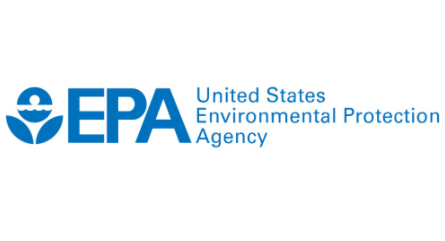EPA seeks to expand regulations on methane
November 1, 2018 - Rebecca Hobart

The Environmental Protection Agency released guidance for tightening methane regulations in early November, proposing a series of protections to mitigate the impacts of the oil and natural gas industry nationwide. This comes due to methane’s critical role in advancing the warming of the atmosphere, with emissions having the potential to trap about 80 times as much heat as carbon dioxide in the first 20 years following the initial emissions' release.
To cut down on the methane waste products associated with oil and gas drilling, the EPA seeks to codify actions that would force states to fix leaking production wells and eliminate venting of natural gas for new and existing sites, according to the agency.
“The section of the Clean Air Act that the EPA is using — Section 111D — requires the EPA to establish these emissions guidelines,” said Gabe Pacyniak, University of New Mexico associate professor of law. “States can choose to either set their own standards which meet the federal minimums or … the EPA has the authority to … set its own federal standards if a state declines to set acceptable standards.”
The EPA’s announcement came in conjunction with the Global Methane Pledge initiative, a global pact aimed at reducing methane emissions by 30% by the year 2030. The pledge, which the White House said was the “single most effective strategy to reduce global warming,” was spearheaded by the United States and European Union and launched at the 2021 United Nations Climate Change Conference (COP26).
“These regulations would significantly reduce methane emissions from oil and gas infrastructure,” Pacyniak said.
Prior to the EPA’s intervention, state production of methane was largely an autonomous process, which upheld a loophole in how methane emissions were recorded, according to William Stanley, professor of political science at the UNM.
Stanley said one way that this loophole was taken advantage of was through some producers measuring their emissions by individual tanks rather than by the collective conglomerate of tanks, which were consequently unlikely to exceed production thresholds.
“If no one of those exceeds the threshold, they don’t have to take any action,” Stanley said. “Under the new rule, there would be a lowered threshold both for individual tanks within a complex, but also for the complex as a whole.”
Natural gas, which is the key contributor to methane emissions, is oftentimes a natural byproduct of drilling for petroleum, according to Tim Korte, communications manager for the New Mexico Gas Company.
“Methane is more potent ... in that it absorbs more infrared radiation and, therefore, heats up the atmosphere more for the same concentration of methane relative to CO2,” Zachary Sharp, director of the UNM Center for Stable Isotopes, said.
Sharp said there’s a large concentration of methane emissions visible by satellite above New Mexico’s Four Corners region due to continued emissions across production facilities in the San Juan Basin.
“There’s some potential methane issues that will come up in the next coming decades that could be really devastating to the world’s climate,” Sharp said.
Methane emissions and their 100-year warming potential is nearly thirtyfold that of carbon dioxide, which has long been the focal point for many discussions of greenhouse gases, according to Stanley.
“Even the best plans that these countries (at the COP26 summit) are offering are insufficient to reduce the (greenhouse gas) buildup in the atmosphere from having really catastrophic climate effects in this coming generation,” Sharp said.
In the event of well leaks above the given threshold that would necessitate action, the EPA’s proposal suggests that the producer should then capture the gas and set up a flare to burn it off, according to Stanley. Pacyniak said combusting methane produces carbon dioxide, which is “a lot less potent than methane.”
“It’s proven to be very hard to reduce CO2 emissions because burning fossil fuels is so integral to so many aspects of our economies and methane emissions are widely viewed as kind of a low-hanging fruit in trying to reduce greenhouse gas emissions overall,” Stanley said.
Sharp said approximately 20% of the atmosphere’s warming could be attributed to methane, with the remainder largely accounting for carbon dioxide and some water vapor. Though methane makes up a smaller percentage of the atmosphere’s greenhouse gases, its ability to trap heat makes it a formidable threat for climate change, according to Sharp.
“We’re already seeing hundreds of billions of dollars in damage annually, from fires, floods and hurricanes, and it’s like ... at this point, (we need to) just sort of say, ‘Okay, let’s see how we can live with this problem,’” Sharp said.
Stanley said the proposed regulations will be “a long process” and anticipates the actual regulations won’t be released until next year.
Rebecca Hobart is a senior reporter at the Daily Lobo. She can be contacted at news@dailylobo.com or on Twitter @rjhobart
View the original piece at the daily lobo website here.
